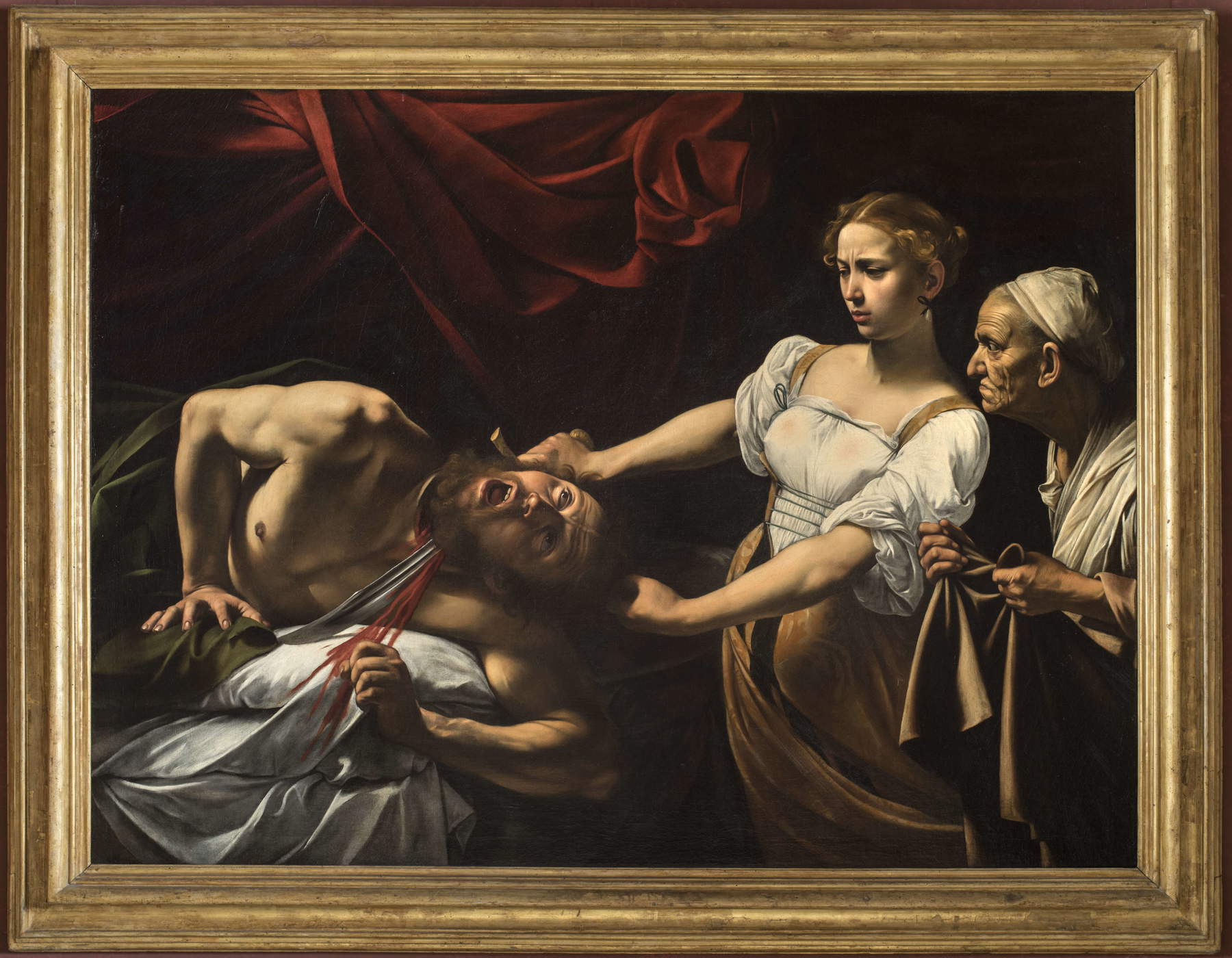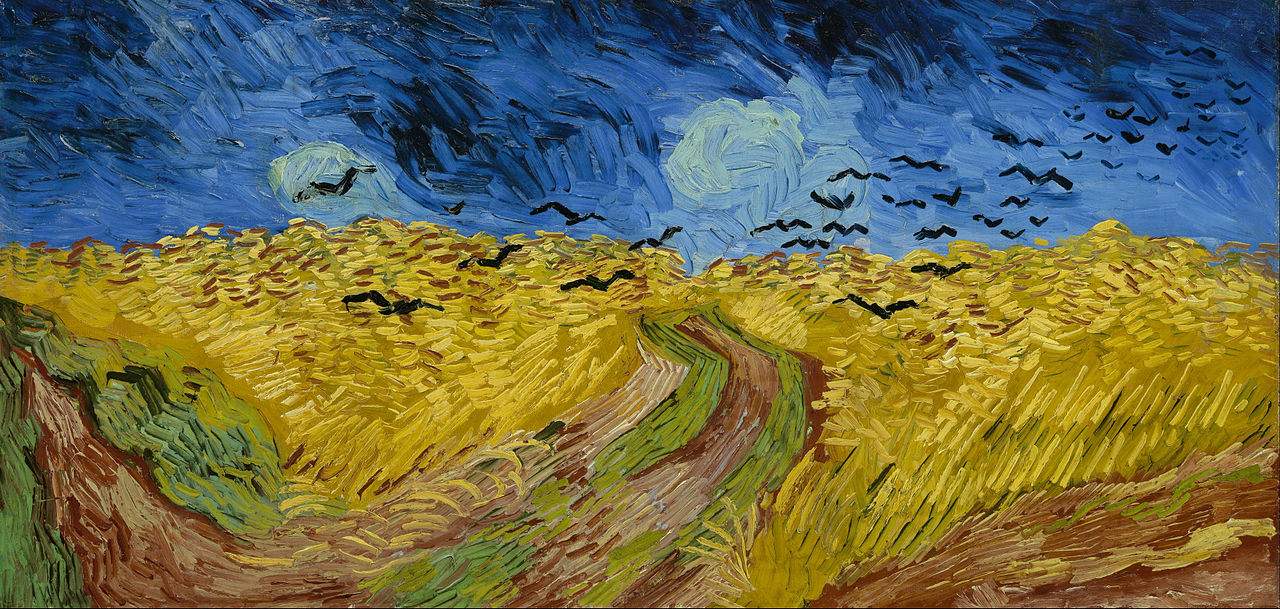I found myself recently reflecting on how much the tormented souls of certain artists still exert a certain fascination after centuries, often to a greater degree than those artists whose art expresses perfection. And on how much this fascination is particularly exerted on those people who themselves call themselves “tormented” because they are extremely reflective, tending toward the melancholy, asking themselves a thousand existential and philosophical questions about their individuality and the society in which they live. It would seem more logical if a person with this disposition would be more attracted to art that tends toward perfection, such as the works of Raphael or Canova, the one a master of harmony and ideal beauty, the other among the greatest exponents of Neoclassicism, combining extreme grace with balance and composure, but often the opposite occurs instead. I will preface this by saying that I do not know about art psychology, although it is an aspect related to the art world that fascinates me a lot, namely how emotions and the psyche interact with the work of art, but I think it works in a similar way as when we are sad and tend to listen to songs that make us cry, while when we are bursting with happiness we tend to listen to cheerful music that makes us dance, sing and thus increase our contentment.
I think that in front of a work that is an expression of an artist’s torment there is a kind of emotional resonance, ofidentification, because it is as if the artist’s tormented soul becomes a mirror of the existential torments of the viewer, who recognizes himself in him, feeling less alone. When a person experiences an inner state of confusion, melancholy, discomfort or suffering, he often feels isolated, misunderstood, “out of place” in the world, and meeting an artist who expresses that pain in a tangible form, which can be a work of art, a poem, a song, sets in motion a series of sensations and emotions that lead one to feel a deep and intimate connection with what these convey, perhaps because in that painting, poem or song the person finds full concrete expression of what perhaps she feels but is unable to externalize. It is as if the inner chords of the soul of the viewer, reader or listener vibrate along with the works, and ideally along with the soul of the person who created them. And often this has a liberating effect on those who share in silence.
It may also be that works that carry within them a torment, a recognizable and shareable suffering may seem more authentic, more real. As if these are testimonies of an artist who has dug so deep within himself that he has come to touch something universal, generating an equation like inner suffering = depth = true art. Following this reasoning, then, a troubled artist might be perceived as more authentic, more interesting, more profound, since in real, everyday life no one is perfect.


Another reason, in my opinion, is the ability these works have to make us think deeply, to bring out truths that often remain hidden behind the hustle and bustle of daily life. They force us to stop, to feel, to confront our most vulnerable parts. Through the artist’s suffering or fragility, we are confronted with universal themes such as imperfection, pain, failure to achieve happiness , or a sense of misfit with respect to the world. And it is precisely this ability to dig beneath the veneer of the everyday, to touch intimate chords, that gives this kind of art a fascinating depth. It is an art that does not allow indifference because it forces one to feel, to think, to look within. In a world that often invites us to superficiality, to distraction, these works manage to give voice to what we tend to keep inside, making it visible, shareable and even beautiful in its raw truth.
When I think of artists with tormented souls, I think, for example, of Caravaggio, Michelangelo, Van Gogh, Munch, Frida Kahlo, Jean-Michel Basquiat , or poets like Leopardi: their works are full expressions of their torments, their existential dramas, and their very lives have contributed to the aura of fascination that they still enjoy today. Indeed, their biographies are just as famous as the works they created. It could be argued that these, however, are not the only artists to have had less than tranquil lives and difficult characters throughout art history (think of Borromini, who died suicide, or Guido Reni, who was very shy, choleric, and had a gambling habit), but the fact remains that these more than others have become emblems of the tormented artist, probably because in them there is an extraordinary combination of the troubled life and the restlessness expressed in their art.
It should be specified, of course, that that sort of identification alluded to is not to be understood as an identification in the biographical events of the artist. It is clear that those fascinated by Caravaggio’s art will not go out and get drunk and get into fights or kill someone in a heated argument or flee from town to town following a conviction. Instead, one identifies with the more general concept of disquiet and torment that emanates from the works and which Caravaggio expresses through the powerful contrast between light and shadow or through the rawness of certain splatter scenes such as the Judith and Holofernes in the Palazzo Barberini in Rome, where the copious blood spurting from the head of the Assyrian general cut off by the biblical heroine even draws straight lines that extend to the white sheets, or as in the David with the head of Goliath in the Galleria Borghese where, similarly, blood gushes in large quantities from the severed head of the giant (a self-portrait by Merisi himself) supported by the hair by the young hero. And the same goes for the other artists mentioned: it is an identification in what their works express.
Michelangelo Buonarroti represented his own existential suffering through the technique of the non-finito: a suffering that arose from the awareness of the fragility of the human being, but above all from the contrast between the tension toward perfection and the awareness that he could not achieve it since he considered it impossible to represent with matter something as perfect and incorruptible as the divine perfection of an idea. In addition to the Prisons, a symbolic work of the unfinished technique is considered to be the Bandini Pietà, which was even hammered by Michelangelo himself as a result of his usual dissatisfaction.


In the skies painted by Van Gogh all his inner restlessness, his psychic dramas and his most tormented moods are reflected. His skies seem to churn like his soul: among the most illustrative paintings is surely The Wheatfield with Flight of Crows, painted shortly before the painter’s death. The dark, turbulent sky, the agitated field and the disordered flight of crows, often read as a symbol of foreboding death, create a somber, ominous atmosphere. It is a true landscape of Van Gogh’s tormented soul. Then how can we fail to mention The Scream by Munch, the Norwegian painter who perhaps more than any other artist made torment the central theme of his work. His Scream is the universal cry in the face ofexistential anguish. No one before him had deformed the human figure in that way, as deformed here also turns out to be the very landscape on which the desperate cry reverberates.
And again, Frida Kahlo transformed physical and psychological pain into art. After an accident that marked her for life, she began to paint herself as a symbol of the body and wounded identity, as in The Wounded Deer or The Broken Column. These are her many self-portraits, the works in which Frida represented all the inner chaos and existential travail caused by her husband’s many interventions and betrayals. Basquiat represented reality, however stark. Her art is a visual cry, full of personal pain, but also of denunciation. It is a cry that speaks of injustices to African Americans, of violence inherent in society, of discomfort, through the recurrence of scribbled words, contrasting colors and chaotic compositions.
Each of these artists was able to portray his or her troubled soul using his or her own expressive language. Through painting and sculpture, they gave visual form to their wounds, fears, and deepest anxieties, as Giacomo Leopardi did in poetry: he too gave voice to universal feelings such as grief, loneliness, melancholy, and unhappiness, making pessimism (even in three stages) the fundamental concept of his poetics.
As Leopardi used words to express the discomfort of existence, these artists used color, form, sign. In different ways they made art a sincere reflection of their own tormented interiority. Their works still speak to us today, centuries later, because they touch deep and universal chords. In front of them we feel more imperfect, but more human. This is how, even in fragility and torment, art unites us and reminds us that, sometimes, it is precisely from wounds that the most sincere voice of the soul can emerge.
Warning: the translation into English of the original Italian article was created using automatic tools. We undertake to review all articles, but we do not guarantee the total absence of inaccuracies in the translation due to the program. You can find the original by clicking on the ITA button. If you find any mistake,please contact us.